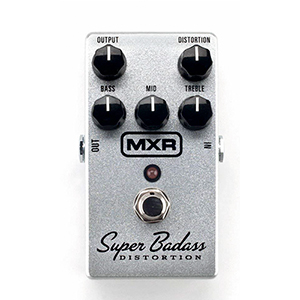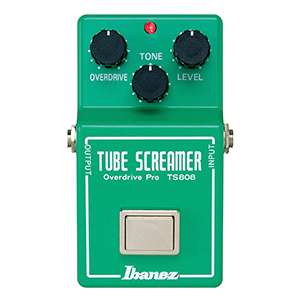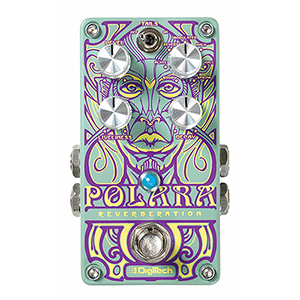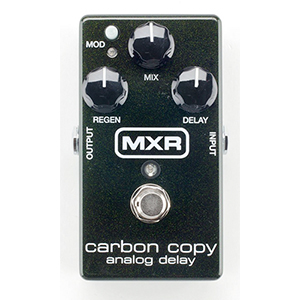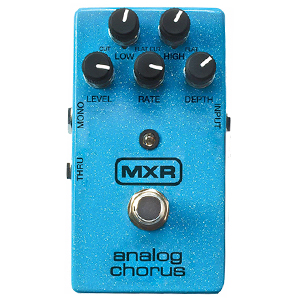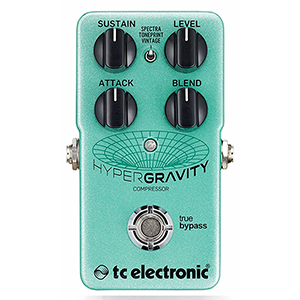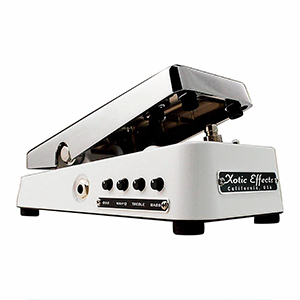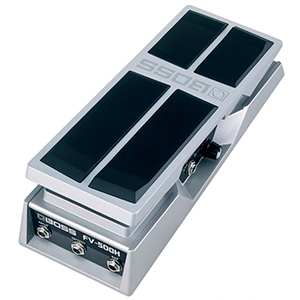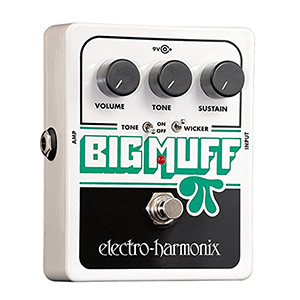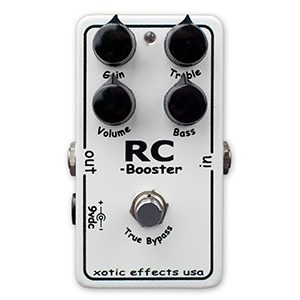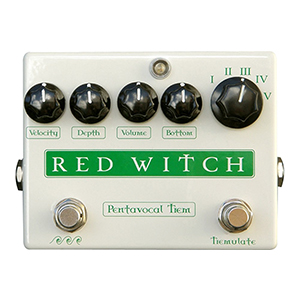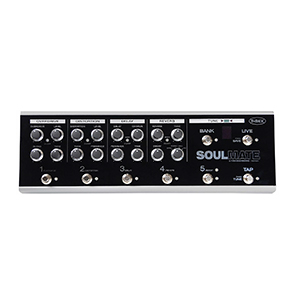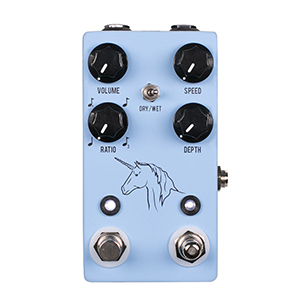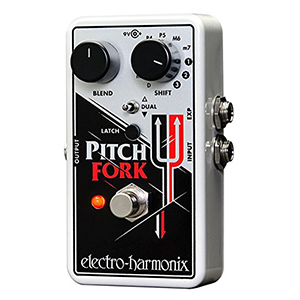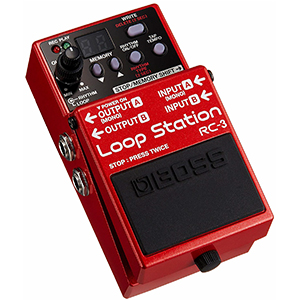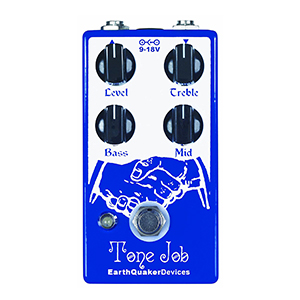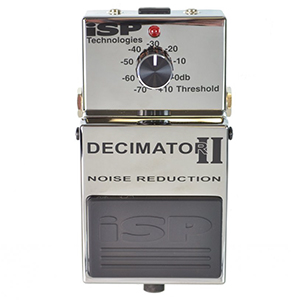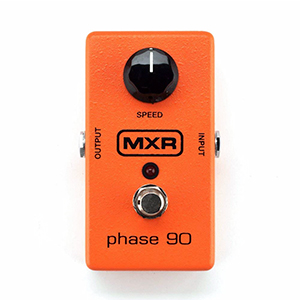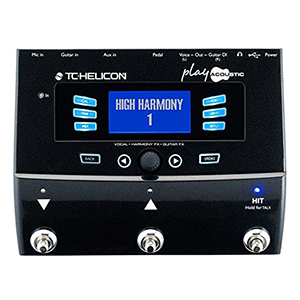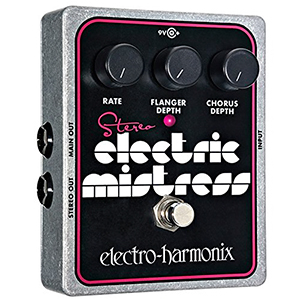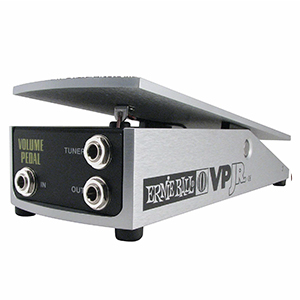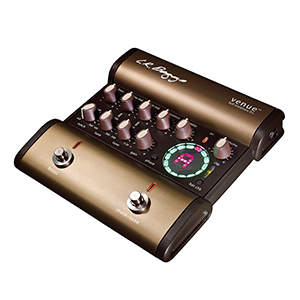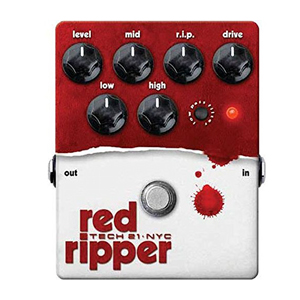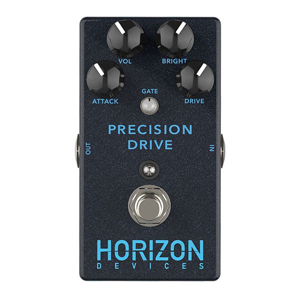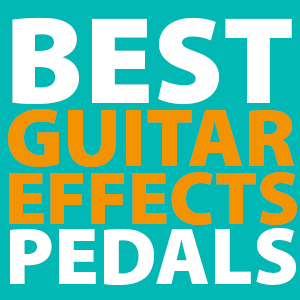 Collecting the best guitar pedals to fill your pedalboard is every guitar player’s goal. There are so many different guitar effects and sounds to collect. Not to mention the shear number of different pedal manufactures that make awesome pedals. It’s a recipe for GAS (guitar acquisition syndrome). This is a common disorder that every guitarist suffers from where no amount of new gear will ever satisfy his craving for more. 🙂
Collecting the best guitar pedals to fill your pedalboard is every guitar player’s goal. There are so many different guitar effects and sounds to collect. Not to mention the shear number of different pedal manufactures that make awesome pedals. It’s a recipe for GAS (guitar acquisition syndrome). This is a common disorder that every guitarist suffers from where no amount of new gear will ever satisfy his craving for more. 🙂
If you are anything like me, you love to play with new pedals and test out combinations of old ones. That’s why I made this best guitar effects pedals review. I go through all of the different types of guitar effects and sounds that you can add to your board along with some top picks that I think every guitarist should have in their collection.
Without further ado, let’s get into the list of top-rated guitar effect pedals and see what guitar pedals you need to get next.
Top 10 Guitar Pedals for Your PedalBoard
Contents
Here is a list of the top 10 essential guitar pedals that every guitar player needs to have on his pedalboard.
21 Different Types of Guitar Effects – The Ultimate Guitar Pedal Guide
There are so many different types of guitar effects out there. Each one of them sound different and each one serves their own purpose in a song or guitar solo. That’s why you need to get one each. Or if you are anything like me, you need to get 3 or 4 of each. 🙂
Here is a complete list of every different type of guitar effects out there along with a description of what they sound like and how to use them.
- Distortion Pedals
- Overdrive Pedals
- Reverb Pedals
- Delay Pedals
- Chorus Pedals
- Compressor Pedals
- Wah Pedals
- Volume Pedals
- Fuzz Pedals
- Boost Pedals
- Tremolo Pedals
- Multi FX Pedals
- Vibrato Pedals
- Octave Pedals
- Looper Pedals
- EQ Pedals
- Noise-Gate Pedals
- Phaser Pedals
- Vocal Harmonizer Pedals
- Flanger Pedals
Distortion Pedals
Distortion Pedals belong in the “Drive” Effects Family”. Their sound can be described as aggressive, gritty, nasty, etc… There are a lot of different distortion pedals, but they all do a similar thing to your guitar signal – they add grit. Distortion pedals alter the wave shape of the signal that comes in them, and without depending on the gain setting like the Overdrive pedals, they create what we call “grit”.
Unlike its cousin, the Overdrive, that is basically emulating the natural sound of a cranked tube-amp, the Distortion effect is crossing that line with having a more aggressive and intense sound.
The Distortion pedals are one of the most used effects. Since they were introduced, they found their way in many different genres – Blues, Pop, Hard Rock, Grunge, Metal, etc…
Usually, distortion pedals have control knobs for Gain, Volume, and Tone, although there are a lot of different sets of controls, these three can be found on most of the distortion pedals on the market.
The Sound that your guitar produces is one of the most important things that you as a player need to have in any given genre. Many players color their Tone with Distortion as a base for their whole sound.
Distortion pedals are easy to use. They tend to have a few control knobs, and they are pretty intuitive. Just turn around the knobs, and find your sweet spot. However, you should know that there are a lot of different types of distortion pedal. There are analog distortion pedals, as well as digital ones.
Distortion is the holy grail of guitar effects if you ask me – it shaped rock music, as we know it today!
See Best Distortion Pedal Reviews
Overdrive Pedals
In the earliest years of rock’n’roll, blues guitarists experimented with a lot of different things to gain a thicker sound from their guitars. The distorted guitar sounds we can hear today in the blues and rock’n’roll records from the fifties are basically coming from an electric guitar plugged in a tube-amp cranked to its maximum volume, resulting in “clipping” the signal and overloading the tubes. This technique, and several others (like poking holes in the speaker cone), were pretty popular before Keith Richards used the Maestro FZ-1 Fuzztone pedal for their big hit “(I can’t get no) Satisfaction”.
Since then, Fuzz Boxes, Overdrive and Distortion pedals rule the music world.
Overdrive pedals usually have control knobs for Volume (Level), Gain (Drive), and Tone. The sound of an Overdrive pedal is a bit softer than the Distortion one. They “push” the gain of the signal from your guitar to the point of “clipping” before entering the amp. This emulates the sound that the guitar fellas in the fifties and sixties did with their amps.
Overdrive pedals can be used as a booster – to boost up the volume on the guitar when soloing, to color your sound with crunch, or as a pedal for thickening the sound coming out from another drive device.
Overdrive pedals are one of the most popular pedals among musicians. From blues guitarists crying out the strings with a crunch, to heavy metal players thickening the low end on their already high-gained amps, the Overdrive pedals can be widely used in many different genres and styles of playing.
See Best Overdrive Pedal Reviews
Reverb Pedals
Reverb pedals are some of the most popular effects that almost all guitarists use. Reverberation is basically reflections of a sound played in the space. Different spaces (or rooms) have different sounding reverb. It depends on many things how a room is sounding – the materials that the room is built from, the size of the room, the form of the room, and of course the “furniture” in the room.
In the early days of recording, studios had “acoustic chambers”, where usually a speaker with playing the music was set at one spot in the room, and microphones were set on the other end of the room. This results in capturing the room sound. Then, the “plate” reverb was invented. A driver of a speaker set on the one end is making the large plate vibrate, resulting in a sound that emulated space. However, the plates were big, and this was done only in recording studios.
After inventing the spring reverb, manufacturers of guitar amps started to implement it into the amps, and guitar players had the effect onstage too. Today, the pedals that we use for reverberation are usually digital, and they have controls for Level, Decay, Tone, and Mode selector switch. The Mode selector switch usually has Plate, Room, and Spring simulations. Of course, this varies from pedal to pedal, but they all do the same – they give your sound space and a flavor of nature.
Reverb is one of the first effects to be set in a guitar amp, and today it is still one of the most used effects in all kind of music genres. From surf rock to modern-day electronic music, we can hear some sort of reverb used on the sounds. Many guitarists can’t even imagine playing without their reverb pedal. Reverb is playing a huge role in coloring the guitar sound.
Delay Pedals
Delay pedals: When a sound “repeats” in a stadium, it is because the sound bounces off the surface, the stadium wall in this example. This is what we call “echo”, or “delay”.
In its early days, the delay effect was made with tape recorders. You can see many dudes still turning old tape recorders into tape delay boxes all around the world. They sound awesome. Then, the analog circuit delays made a boom on the market and ruled the world for a decade. After that, the digital delay was invented. Today most musicians use digital delays.
However, there are still guys (like myself) who want their delay analog. Delay pedals always have control knobs for Level (Wet/Dry), Feedback amount, and Delay Time. There are pedals with more controls. For example, the modern digital ones come with rotary Mode selector switch with different kinds of delay simulations from which you can choose.
The usage of a delay pedal is pretty straightforward, and you don’t have to be a rocket scientist to know how to use one. Of course, the versatile ones have more controls and give you a big palette of sounds, but they are also pretty easy to use.
Delay is used by almost all famous guitarists today.
It is widely used by psychedelic and shoegaze guitar players, and they usually like to overload their guitar sound with delay, which results in very cool sounding oscillations. Delay is very important to players in every music genre, and every guitarist that tries it stays with it forever.
Chorus Pedals
The Chorus effect is a modulation effect. Chorus guitar pedals take your guitar signal, copy it several times, and then play it with a slight delay and a small change in tune. This makes your guitar sound like there is more than one guitar playing.
Chorus Pedals have Rate control knob – that controls the speed of the waves, and Depth control knob – which sets how deep the waves go. On the most of the pedals today, we can find Level (Wet/Dry) control knob, and EQ controls.
Chorus effect is used in many different genres of music, from classic rock and pop music to metal, from The Cult’s “She Sells Sanctuary”, and Blue Oyster Cult’s “Don’t fear the reaper” to Metallica’s “Fade to Black” and “One”, and Nirvana’s “Come as you are”, you can hear guitar riffs drenched in chorus in every rock genre.
Compressor Pedals
Compressor pedals serve your guitar tone several different things. First, when you play clean guitar, the sound tends to be shorter in sustain than a distortion guitar sound, a compressor pedal will add sustain by increasing the volume when your sound begins to decay.
Also, when your sound is too loud at moments, compression will decrease the volume automatically. Compressor pedals also can act as a booster with giving you more volume. There are a lot of different compressor pedals on the market, but they usually have a similar set of controls. They have controls for Level, Tone, Attack, and Sustain.
The Level control knob sets the Volume of the pedal; Tone will control the Brightness of your tone (There are also pedals with two-band and three-band EQ controls for this function); Attack control sets how much time will the compressor need to act on a note; Sustain controls how much your notes will last.
There are Compressor pedals with a Ratio control knob, that sets how much your notes will be compressed, and Threshold control knob, that sets at which level of the signal will the compressor start to act. Compressor pedals are used in pretty much all genres of music. Compressor pedal, if used properly, can level-up your performance, but you might get confused if you don’t know how to use it.
We suggest that you play a little bit with the pedal, and see on the internet how some of the other guitar players are using it, before taking it on stage. Compressor pedals are also commonly used in recording studios. In the simplest terms, a compressor will “even” your notes.
See Best Compressor Pedal Reviews
Wah Pedals
Played by many players in every possible genre and from the god of rock guitar himself, Jimi Hendrix, Wah Pedals are one of the most popular guitar pedals among guitarists. Wah pedals have very distinguishable sound, from which the name of the effect comes (wah-wah).
The Wah pedal actually is a tone controller, controlled with a pedal, that sweeps up and down through certain frequencies, creating the sound we know as a “wah-wah”.
In their early days, wah pedals didn’t have other controls than the pedal itself. Today, however, there are digital Wah pedals with several different wah sounds, tone range control knobs, drive controls, modulation effects… Some even have a preset bank, where you can store your presets and have them on the fly.
The pedal is very easy to use, it is a “plug & play” pedal. Wah pedals inspired tons of great music throughout the history of rock’n’roll. From “Voodoo Child” to “Surfing with the alien”, we can hear the wah-wah effect it in numberless guitar solos and riffs.
Volume Pedals
Volume Pedals are pretty easy to understand. They basically do the same job as the Volume control knob on your guitar does, and the only difference is that you have that controlled by a pedal.
One of the most common uses of this pedal is creating “Volume Swells”, which is basically a technique of cutting off the volume when you strum/pick your guitar, and then slowly engage it to the loudest point. You can also use a Volume pedal paired with different effects, like delay for example, and control how much signal you will feed the delay.
Many players like to put their Volume pedal first in the chain, but you can also set it anywhere you want in the chain, and have a unique sound. A Volume pedal can open up a whole new specter of colors on your other effects-boxes.
Volume pedals are used by guitarists in many different genres, for a lot of purposes.
Fuzz Pedals
Fuzz pedals and boxes are legendary as their story is, and they are receiving love from a lot of guitar players. After Glen Snoddy invented the Fuzztone, and Gibson decided to mass produce it, guitar pedals world started to grow. The Gibson Maestro Fuzz-Tone is the first-ever mass-produced guitar pedal that runs on a battery. However, the pedal really started to sell, when Keith Richards used it on “(I can’t get no) Satisfaction”.
An interesting fact of the period before “Satisfaction” is that the Fuzz-Tone was marketed as a tool to make your guitar sound as a Trombone.
After the Rolling Stones hit exploded on the charts, Fuzz boxes were made in England too – after the Tonebender and the Arbiter Fuzz Face were invented, Fuzz effect started to be a part of many guitar players rig, Jimi Hendrix was one of them too!
A few years later, many companies started to sell their own version of the Fuzz box.
Electro-Harmonix invented the Big Muff Pi, who took over the throne of Fuzz boxes, and in the seventies, it was used by all the great names in the rock world. From Carlos Santana to David Gilmour, everybody rocked the Big Muff.
Today, the Big Muff still sells very well, and most of the fuzz boxes produced are inspired by it. It sounds like a blowtorch!
Fuzz is a very easy-to-use pedal, and although there are tons of different boxes on the market, they are pretty simple and intuitive. They usually have controls for Volume, Tone, and Sustain. These controls are all pretty self-explanatory. Just stomp on the footswitch and rock it. Fuzz pedals are used in every rock genre, from the early days of rock’n’roll in the sixties, through the grunge, sludge, stoner, and metal eras; every guitarist loves a rocking fuzz tone.
Boost Pedals
Just like the name of the pedal suggests, Boost pedals will boost (increase) the volume on your guitar sound. In the sixties, the amps that were used in the UK were a lot darker sounding than the amps used in the USA. Many manufacturers of guitar amps and accessories offered a solution for this with adding a “treble booster”.
The one that stands out from the others, from that time period is the Dallas Rangemaster. The circuit of the Dallas Rangemaster was working wonders for guitarists at that time, due to its boosting up to 24dB and its high-pass filter. The higher a guitarist would play on the neck, the effect was more pronounced and extreme.
Treble booster pedals were used by many big names throughout rock’n’roll history – Eric Clapton, Brian May, Tommi Iommi – they all used a treble booster for their guitar sound.
Today, booster pedals are used very frequently in every possible genre. They usually have one control knob – Level (Volume). However, many of the boost pedals selling today also have Tone controls. Do you need more volume on the solo? No problem – just stomp on your boost pedal and you are good to go. You need more natural distortion out of your amp – just stomp on your boost pedal.
Tremolo Pedals
The Tremolo pedal effect is a modulation effect that metrically changes the volume of the signal. The Tremolo effect is the first ever invented effect used on electric guitars. After Dearmond made the first tremolo box in 1941, a new era of music started. Guitar pedals!
A short time after that, Donald Leslie invented the Leslie speaker as we know it today. In 1947, Nathan Daniel (Danelectro) invented a guitar amp with a built-in tremolo effect, and in 1948, Multivox and Gibson started producing and selling guitar amps with a built-in Tremolo effect. Throughout the fifties, many blues players have recorded tracks with a Tremolo effect on their guitars. In the sixties, when rock’n’roll era exploded, it was everywhere.
Today, the Tremolo pedals have Rate control knob (controls the speed of the effect), and Depth control knob (controls the intensity of the effect). Also, there are pedals on the market that have Wave control, which is allowing you to set the waveform on your Tremolo.
The tremolo effect has inspired tons of guitar riffs, and it will continue to do so in the future. It is commonly used in rock music, but there are examples of it in every music genre out there.
Usually, you don’t have to be a rocket scientist to set a Tremolo pedal, just turn around the Rate and Depth control knobs to get your perfect “trems”.
Multi FX Pedals
Unlike the stomp-boxes that usually provide you with a single effect, Multi FX Pedals (also called Processors) have multiple effects built in them.
Multi FX Pedals would usually come cheaper than buying all the effects separately, they have a presets bank for saving up your sound colors and having them on the fly, they need just two cables (one plugged in the guitar, and one in the amp), and they take up less space.
Of course, these are the good sides of a Multi Fx pedal. However, there are cons and flaws too.
Most commonly, Multi FX units are digital – this means you won’t have the natural sound of the analog stompboxes, which is a huge downside for many guitar players. Also, Multi FX pedals are not as easy to use as single-effect stompboxes are. They are not intuitive, and often times are pretty complicated to use – you have to spend some time learning how the thing works.
There are players who absolutely love their Multi Fx units, and consider them a pure blessing. Modern ones, also have a USB connectivity feature, which is great for recording. However, there are guys who are disgusted by the sound of the digital Multi Fx pedals too.
See Best Multi-FX Pedal Reviews
Vibrato Pedals
The Vibrato effect belongs in the modulation effects tribe, and in the Pitch-Shifting family. Vibrato is an effect used in music for thousands of years, and it is basically a rhythmical pitch-shifting. The Vibrato effect as a guitar effect was first introduced in the fifties as a built-in effect in guitar amplifiers.
Usually, Vibrato pedals have control knobs for Speed and Depth, but there are models that also have control knobs for “Rise” – which controls how much time will the effect take to move from the original to the other pitch.
Today, there are a lot of different Vibrato pedals, some analog, some digital – some have the basic core effect and simple layout of controls, while others are more versatile. They all do the same job – they add Vibrato to your guitar notes.
Vibrato pedals are used in every possible genre in music, they are usually very intuitive and easy-to-use pedals.
Octave Pedals
Octave Pedals produce an octave sound below what you are originally playing. Some Octave pedals can also produce an octave higher, and some can produce two octaves below from the original sound. There are monophonic octave pedals that can play only one sound, and polyphonic octave pedals that can play both the original sound and the one that the pedal is producing. The first octave pedals were introduced in the sixties, they were paired with a fuzz effect, and the most notable user of it is the legend himself, Jimi Hendrix.
The first clean octave pedal was introduced by Maestro in 1971 and it was called Maestro OB-1 Octave Box.
Today, the digital Octave pedals are far more used than the analog ones, due to the simple fact that they “track” better. Some can even track whole chords!
Octave pedals have separate Volume control knobs for the original signal, and for the octave/octaves. They are pretty intuitive – just set those the way you like it, and you are good to go.
Some Octave pedals have stereo inputs and outputs, some (like the Boss OC-3) have separate inputs for guitar and bass.
Octave pedals are good for playing in a duo with a drummer, this is what Jack White from White Stripes does. They are most commonly used in rock genres.
Looper Pedals
Looper Pedals are a great tool not only for guitarists but for every type of musician. They are awesome for practicing, but also serve a great deal for the one-man-band type of performances.
With a looper pedal, you basically record a chord progression, phrase, or a sequence, and then the pedal “loops” it. You can create multiple layers of samples and loop them endlessly.
Well, some loopers can record and loop only one take, but there are the more powerful ones with which you can create a whole symphony.
There are loopers on the market, with which you can edit, erase, overdub, or stop an independent loop, while the other loops keep on playing.
Some Looper pedals even have built-in effects. There are many different looper pedals, so we won’t get into details on how to use one. Basically, you press the footswitch and play a phrase, and then when you press the footswitch again, the pedal starts to loop the thing you just have played.
You just need to be good at timing when playing with a looper pedal. With some practice, the results can be amazing. It is recommended to every musician to have a looper pedal – it is a great practice tool.
EQ Pedals
EQ pedals are used by guitarists to improve their sound in the mix, by placing the frequencies of their guitar sound to certain spots in the sound spectrum.
Usually, we have a three-band EQ controls on our amplifiers, but often times this is not enough to set our sound on a spot where the interference with the other instruments would be minimal. This is why we need an EQ pedal.
The main difference between EQ pedals is how much controllable frequency ranges they have. There are three-band, five-band, seven-band, and ten-band EQ pedals on the market.
The more “band” an EQ pedal is, the more precise it will be. In terms of use, EQ pedals can seem complicated at a first look, and you have to play a little with them, to get how they work. The best advice we can give you at this point is always to first try removing unwanted frequencies (subtract) because with boosting frequencies, there are bigger chances to get unwanted noise and hiss.
Noise-Gate Pedals
Some pick-ups, high gain amps, and some guitar pedals tend to produce noise/hiss. This is why we need a Noise Gate pedal. A Noise Gate pedal is used to diminish the noise or the hiss produced of gear. The Threshold control knob on a Noise gate pedal lets you set the volume at which the pedal should attenuate. Basically, with this knob, you must find the sweet spot, and this takes some time to master. With the Decay knob, you control how fast will the effect kick in.
Mastering the Noise-Gate pedal takes some effort and time. But believe me, it is worth it.
The other thing you should care about when setting a Noise-Gate pedal in your rig is the placement in the pedal chain. Some players like to set the pedal at the end of the chain. However, there are some rules. You should always put the Noise-Gate pedal before Delay and Reverb. Also, placing it before or after a distortion pedal will give you very different tweaking options.
You should just play around it, read some tips and tricks, and find your pedal’s sweet spots. It is a great investment in sound to have a Noise-Gate pedal – with it, you won’t have the annoying noise/hiss in the background anymore.
See Best Noise Gate Pedal Reviews
Phaser Pedals
The Phaser effect is basically filtering certain frequencies and volume increasing and decreasing. The Phaser belongs in the modulation effects family.
It takes the signal plugged in the pedal, and it splits it. The original sound stays the same as it went in, while the other is phase shifting. This creates the sound we know as “Phaser”.
Some people describe the sound of the effect as “swirling” sounds. Since its boom in the seventies, it has become a very popular guitar effect. Many legends of guitar playing, such as Eddie Van Halen, used this effect to create their own unique sound. Today, we can hear this effect in every single genre, and it seems to me that guitarists will never get tired off using it.
There are Phaser pedals with a different set of controls. Most commonly Phaser pedals will have Speed, Depth, and Resonance control knobs. These three will set the phase shifting’s details.
Phaser can be a very versatile effect, and many players like to play and experiment with it.
Vocal Harmonizer Pedals
Investing in a Vocal Harmonizer Pedal is a great idea. It will make your singing richer, and you will impress the audience. Vocal Harmonizer Pedals are designed as a guitar pedal is, and they have their control knobs, and one or more footswitches. A Vocal Harmonizer will add harmony to your vocal. But how?
Well, basically you plug in both your guitar (other instruments and backing tracks work too) and your microphone, you set what kind of a harmony you want to be applied, and you are good to go. The thing is, the Vocal Harmonizer will track both your guitar playing and your singing, and from this information, the pedal will know what kind of chords you are playing and will add the fitting harmony. Pretty cool, right?
Many people in the audience will search the stage for backing singers, but they are hidden in a small box placed close to your feet. Some Vocal Harmonizers even have effects, such as Reverb, Delay and similar for your voice and for your guitar. Some even have a built-in looper, and a built-in tuner.
Vocal Harmonizers are a very good tool to spice up your act, both for playing solo and for a full-blown band. There are many different Vocal Harmonizers, and they tend to confuse the singers when they first stumble upon them. It is recommended to read the instructions manual and get used to the pedal, before taking it on-stage.
See Best Vocal Harmonizer Pedal Reviews
Flanger Pedals
Ever wondered what those “Jet Passing” sounds in the guitar records are? It’s a Flanger Pedal. The Flanger effect belongs in the modulation effects family, just like the Phaser, the Vibrato, the Chorus, etc.
What the pedal does to your signal is, that it takes it, it splits it, and while the original signal stays the same, the other one slows down a few milliseconds and then speeds up meeting the original one. All flanger pedals of today have these controls: Rate, Depth, and Resonance, and Manual.
Rate controls the speed of the effect, Depth controls how much of the effect is leaving the box, Resonance controls how far will the sweep go, and Manual sets the center of the sweep.
Flanger pedals are used in many different genres, from pop to metal, we can hear guitar riffs drenched in Flanger.
See Best Flanger Pedal Reviews
Expression Pedals
Expression Pedals are used to control certain parameters of the gear that allows usage of an expression pedal. This means, that in order to use an expression pedal with an amp, a multi-fx unit, stompbox, keyboard, or midi controller, the thing must have a dedicated Expression pedal port. Many Expression pedals don’t have onboard controls, but there are pedals that have a “minimum depth” control knob – this allows the player to set the point from where he wants the expression to begin. For example, when using the Expression pedal with a delay effect, some players want to have an amount of the effect all the time and increase it with the expression pedal when they need it.
Some Expression pedals also have a Maximum depth control. There are passive and active Expression pedals, and if you are planning to get one, you should first see what is compatible with the gear that you want to use the pedal on. Also, there are Expression pedals with toe switch for an on/off feature. Some Expression pedals even have a momentary toe switch (latching).
Having an expression pedal gives freedom to the player to change the effect he is using on the fly. Many players love this option. There are players in every genre that are using an Expression pedal, and if you have a port that is allowing you to use one, you should probably get one!
See Best Expression Pedal Reviews
Guitar Pedalboards
A Guitar Pedalboard is a board (or a container) that will keep all of your pedals in one place. We recommend that every professional guitar player should use one. Your rig will never be dragged across the stage again, and it will bring order in the chaos.
Some Pedalboards have their own transformer and power supply cables.
The best kind of pedalboard also has a cover (a lid), which makes transportation and pedal assembly a solved problem. Just put it on the spot you want it, plug two cables, and you are good to go. There are awesome pedalboards on the market, that are designed with great attention to detail, and they are usually not very expensive.
However, if you don’t have to money to spend it on something like a pedalboard, you still have the option to make your own. There are a lot of good step-by-step Instructables on the internet on how to make one.
Acoustic Guitar Pedals (DI, preamp)
Setting a good tone on your Acoustic guitar while plugged-in can sometimes be a problem. This is why we have Pedals for Acoustic guitars. Acoustic guitar pedals (or preamps) are becoming a must-have for the traveling, gigging musicians that play Acoustic guitar.
Usually, performers don’t know in what kind of a sound-system they are going to plug-in in the venue, this is why Acoustic guitar pedals usually have an EQ controls, and other controls that will drastically improve your sound, such as a notch-filter control.
Many of them also have a built-in tuner, and built-in effects, such as delay and reverb. If you are an Acoustic guitar player, you already know that setting a good tone in a venue can be tricky.
Acoustic guitar preamp will help you a lot with setting your tone.
See Best Acoustic Guitar Pedal Reviews
Bass Distortion Pedals
Plugging a bass guitar in a guitar pedal in some cases will sound awesome, but in many cases, it will totally ruin the bass experience with cutting off the low frequencies and producing a muddy tone. This is why there are distortion pedals specifically designed for a bass guitar.
Just like the distortion pedals for guitar, the bass distortion pedals have controls knobs for Volume, Gain, and Tone. Of course, there are the bass distortion pedals that have a Blend control knob. There are also pedals with two outputs, one for a dry signal, and the other for the distorted. With the two outputs, you can plug your bass in two outputs and have a huge, massive sound.
Bass distortion pedals are commonly used in genres like Metal and Stoner Rock, but today they can be heard in pretty much all sub-genres of rock music. Bassist absolutely love a distorted, pumped-up sound!
See Best Bass Distortion Pedal Reviews
Metal Distortion Pedals
As you probably already know, the metal muses can hardly be satisfied with an ordinary distortion sound. They want a hard, and gritty chugs that will make even the satan to headbang. So yeah, if you are a metal fan, and you want to play metal guitar, you should get yourself a Metal distortion pedal.
Usually, a Metal distortion pedal will have Volume, Gain, and Tone control knobs, just like all distortion pedals too. They are pretty easy to use – you have to make just a few tweaks to have a mind-blowing, Satan-wakening distortion sound.
As the name suggests, this kind of distortion pedals are used most commonly in metal music, but they are also frequently used in many different rock and pop genres.
















